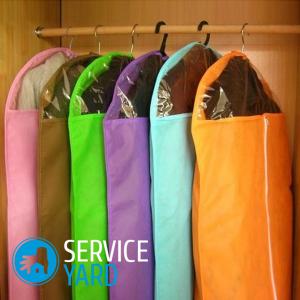Types of down jacket fillers

The cold wind intensifies, the frost grows stronger, and wet snow “makes us happy” with dampness and dampness. Such weather conditions are very inspiring for the main purchase of the winter season - warm outerwear. But in order to get a really high-quality thing that will warm even in severe frosts, you should understand what types of down-padding fillers are, their advantages and disadvantages. This is what we will talk about in our article.
to contents ↑Fluff
The best natural insulation is the fluff of waterfowl that live in cold climates. This natural material is not only the warmest, but also the most expensive, because it is collected manually. In the first place - the eider down, followed by the goose, followed by duck and swan.
Important! Chicken fluff is not used as a filler for outerwear.
A unique feature of the natural filler is that it can be reduced in volume to a minimum size, and after shaking, return to its original position.
Important! A small feather protects the fluff from rolling into lumps and settling.
Benefits:
- Excellent thermal insulation.
- Minimum weight.
Important! As a rule, on outerwear, the ratio of feather to fluff in the insulation is indicated, which helps to determine the quality of the product. For example, a value of 80/20 indicates that the insulation contains 80 percent of the pure fluff and 20 percent of the feather.
Disadvantages:
- Expensive.
- When washing, it is possible to knock it into lumps (you need to beat it to return the product to its original position) - it is better to dry clean.
- A manifestation of an allergic reaction is possible.
to contents ↑Important! To look really beautiful, fashionable, and feel comfortable in new winter clothes, pay attention not only to the quality of the filler. See information useful for a competent purchase in our articles:
Wool
Wool is a durable, wear-resistant and hypoallergenic padding for down jackets that perfectly warms up to minus 25 degrees in frost.
Important! It is often used in shoes and clothes for children, as well as for linings in products such as parkas.
Benefits:
- Heat preservation in frost to -25 degrees.
- Hypoallergenicity.
- Durability.
Disadvantages:
- A lot of weight.
- When washing, deformation is possible (it is better to give it to dry cleaning).
Sustans Bio Powder
This is an innovative insulation that is created using a patented biopolymer. It has excellent thermal insulation properties and low weight, as well as easy-to-operate material.
Important! Sustans Filler is the first bio-based high-tech material to receive approval for the US Department of Agriculture’s new bio-based product label.
The spherical shape of the particles of this filler gives it a pleasant silky structure, exceptional fluffiness, resistance to compression (you can erase it yourself).
Benefits:
- Durability.
- Saving the form.
- High heat-saving characteristics.
- Deformation resistance.
Disadvantages:
- Expensive.
to contents ↑Important! How long your outerwear will delight you with its beautiful appearance, warmth and comfort depends on how correctly you care for it.Bookmark our useful articles and use the information from them if necessary so that you don’t have to think about buying new clothes every season:
Polyfiber, Fibertek, Fiberskin and Holofiber
These synthetic fillers for down jackets are made of fibers twisted in the form of springs or balls that have cavities and do not communicate with each other. Thanks to this, products with such a filler hold their shape perfectly and retain heat.
Winter outerwear in which this filler is used is not very expensive. All the materials listed above have similar thermal insulation characteristics.
Benefits:
- Affordable cost.
- Moisture resistance.
- Durability.
- Heat preservation in frosts up to minus 25 degrees.
- Keeping shape after washing.
to contents ↑Important! There are no minuses as such.
Thinsulate
Thinsulate is also called artificial fluff. It is a super resistant elastic fiber that retains volume under all conditions. It is the lightest of all synthetic fillers.
Important! According to the manufacturer, tinsulate is 1.5 times warmer than even natural fluff, has unique thermoregulating properties, does not absorb moisture, and also retains its shape after washing and subsequent drying. This material is very in demand for sewing sportswear and special uniforms.
Benefits:
- Small thickness and weight.
- Saving the form.
- Heat preservation up to minus thirty degrees.
- Washable at home.
Disadvantages:
- Expensive.
Waltherm
This is a new generation of thermal insulation material, which was developed by the Italian research laboratory Valtherm. Micropores created from thousands of small cells form the honeycomb structure of this material. Due to this, it has the property of air laying.
Also, the structure of this filler for down jackets makes it possible to freely release sweat and steam without any change in the state of the material, which distinguishes it from those products in which natural fluff is used.
Benefits:
- Subtlety.
- Excellent thermal insulation.
- Effective moisture removal.
Disadvantages:
- Used exclusively for sportswear.
- Expensive.
Primoft
This insulation has a long-fiber structure, thanks to which it can quickly restore shape. Even after repeated washes and subsequent drying, the material does not deform.
Important! Primoft fibers have water-repellent properties that help liquids drain or evaporate.
Primaloft has the softness of goose down, due to which the products with it take the necessary shape - the clothes sit well on the figure, and if this is a blanket, it fits the body of a sleeping person.
Important! It was selected as a strategic material for the US Army.
Benefits:
- Durability.
- The transmission of moisture and air.
- Resistance to deformation.
- Good thermal insulation.
- Light weight.
Disadvantages:
- Expensive.
Sintepuh
This non-woven fabric is made from many very fine fibers. polyester. The filler is made of crimped fibers that look like springs. Intertwined with each other and impregnated with silicone, they form a dense structure. Inside these fibers are strips.
Important! All openings are microscopic, so the user can not worry that moisture will get inside.
This filler for down jackets does not absorb moisture at all, so the clothes with it do not get wet and perfectly retains heat even when wet. Sintepuh is the most popular material for warming winter outerwear, since it has remarkable qualities at an affordable price.
Important! A winter jacket with a synthetic winterizer looks voluminous, like a down jacket, but it contains artificial filler.
Benefits:
- Moisture resistance.
- Good thermal insulation.
- The combination of light weight and volume.
- Quick shape recovery after washing.
- Affordable cost.
Disadvantages:
- It passes air poorly, accumulating moisture from the wrong side.
- Gradually loses heat-insulating qualities.
Synthetic winterizer
There are two types of synthetic winterizer - new (hollow) and old (dense). Both are made of polyester fibers, which are bonded thermally.
Previously, the synthetic winterizer was laid in parallel layers, which is why it had very low rates for heat saving and moisture conductivity. But today, a dense synthetic winterizer is used only in the cheapest products. In the hollow (new) synthetic winterizer, the fibers are not glued, but “stick” to each other thanks to the so-called silicone needles.
Important! But even despite this, the synthetic winterizer is still inferior to many modern heaters. From washing and exposure to sweat, it can lose up to half its thickness. In addition, it is unsuitable for cold weather - in clothes with this insulation it is comfortable only up to minus ten degrees.
Benefits:
- Affordable cost.
Disadvantages:
- Fragility.
- Low moisture resistance.
- Insufficient thermal insulation.
Stock footage
In the cold winter season, you should definitely take care of purchasing warm and high-quality outerwear. A down jacket is what you need. But in order to choose a really high-quality thing that will warm even in more frost, you need to figure out what types of fillers are for down jackets. Only by comparing their advantages and disadvantages, you can choose a good product that will serve you more than one season.




























